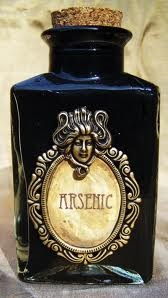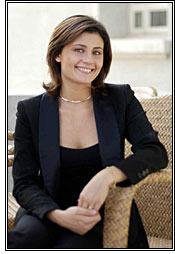|
|
 |
|
March 23, 2015
Creators Syndicate
By now you have no doubt read or heard news reports about
the class-action lawsuit filed in Los Angeles Thursday alleging unsafe levels
of arsenic in some California wines. The lawsuit calls for a recall of the
wines in question and testing to ensure purity. On the surface this sounds
reasonable.
Arsenic, a toxic metal found in the ground, has been called
the “king of poisons and the poison of kings.” It can kill. It can cause
cancer. Yet there is more to the story, and the lawsuit, than meets the eye.
 It is common for trace elements of arsenic to be present in
food products. There is arsenic in your water, the vegetables you eat (whether
organically farmed or not) and the fruits and fruit juices you consume. And,
yes, there are traces of arsenic in wine. It is common for trace elements of arsenic to be present in
food products. There is arsenic in your water, the vegetables you eat (whether
organically farmed or not) and the fruits and fruit juices you consume. And,
yes, there are traces of arsenic in wine.
“Virtually anything that has to be watered to grow has some
level of arsenic,” said winemaker David Stevens, a winemaking consultant with
Napa-based Davon International.
The U.S. Environmental Protection Agency (EPA) is well aware
of the presence of arsenic in food products and the risks involved, but issues
guidelines on just a few, including water. The limit on trace elements of
arsenic in water is 10 parts per billion (ppb). There is no guideline for wine.
The lawsuit bases its allegations on the EPA standard used
for water. Therein lies the rub. Water is not wine. The recommended water
intake for an adult is 3 liters daily.
The lawsuit alleges researcher Kevin Hicks, who owns a
laboratory called BeverageGrades, tested about 1300 wines and that 80-plus had
as much as five times the legal limit of arsenic permitted in water. Wine
industry experts challenge that comparison on a number of levels, not least of
which is the unlikely possibility anyone consumes 3 liters of wine daily.
What’s more, the alleged dangerously high levels of arsenic
found in the wines named in the lawsuit are far below the international norms.
Canada, the European Union and Japan have regulations that permit the presence
of arsenic at 100 to 1000 ppb.
If those levels were deemed dangerous, you would never eat
another serving of mussels. A typical bowl of mussels has an arsenic level of
1000 ppb. Apple and pear juice also have significantly higher levels of arsenic
measured as ppb than wine.
So that begs the question, why was this lawsuit filed in the
first place?
It turns out BeverageGrades sells a service to test wines
for purity. The Wine Spectator, a consumer publication, reports that the day
the lawsuit was filed BeverageGrades sent a press release to a number of wine
retailers offering “a screening and certification model that allows them to
assure their customers of the purity of all the alcoholic beverages they sell.”
Now that could be a coincidence, or not. Adding to the
intrigue as to why, the wines targeted in the lawsuit tend to be lower-priced but
high-volume wines owned by big companies – Bronco, Trinchero, The Wine Group,
Treasury Wine Estates – with deep pockets. Now that could be a coincidence, or
not.
Taking everything into account, including the international
norms, it seems as though the allegation of dangerously higher levels (ppb) of
arsenic in these wines is greatly exaggerated. The whole thing has the whiff of
a scam.
It makes me think about the millions of Americans who enjoy
a glass or two of inexpensive wine as they relax at home after a hard day at
work, and how many of them are now uncomfortable with that guilty pleasure
(judging by the comments on I’ve seen on social media) and not sure their wine
habit is safe.
If it turns out the legal action is a scare tactic being
used to gin up revenue for BeverageGrades and the complicit law firm, tar and
feathers would be too good.
Want to comment on this post, or anything on WineReviewOnline.com?
Connect with us on Twitter: @WineReviewOnlin.
Robert Whitley is @WineGuru.
Posted by Robert Whitley at 4:47 PM
|
|
March 18, 2015
Creators SyndicateSome winemakers live the dream. Then there is Chris Phelps, whose path to an exalted position in the Napa Valley has the ring of a fairytale.
Winemaker at Swanson Vineyards in the Napa Valley the past dozen years, Phelps is now a quarter-century into a journey that began when he graduated the University of California at Davis with a degree in enology.
He also took classes in French throughout his undergrad years and yearned to visit Bordeaux. He had an opportunity to spend a year at the University at Bordeaux to further his winemaking studies and embraced it.
 “I took French language classes throughout college and loved it,” he remembers. “It was a great opportunity to practice my speaking skills. That was the 1982 vintage. After studying at the University of Bordeaux, I decided to stay for harvest.” “I took French language classes throughout college and loved it,” he remembers. “It was a great opportunity to practice my speaking skills. That was the 1982 vintage. After studying at the University of Bordeaux, I decided to stay for harvest.”
Phelps applied for an internship with Chateau Petrus, the fabled estate of Christian Moueix in Pomerol. Though he was initially awarded the internship, his response arrived too late and he was passed over for someone else.
Instead of an internship, Phelps was so highly regarded by the Moueix team he was offered the job as winemaker at a chateau Moueix owned in Puisseguin, a satellite appellation of Saint-Emilion.
“It was incredible to be able to be a (full-time) winemaker so fast after college,” Phelps said.
The fairy tale didn’t end there. Moueix had plans to open a new winery in the Napa Valley in 1983 and asked Phelps to be the winemaker.
“At first I turned it down,” Phelps remembered. “It wasn’t enough money, not to live in the Napa Valley.”
Moueix made an adjustment in the compensation and the rest is history. Phelps and Moueix launched Dominus together and Phelps stayed at Dominus for 12 years before moving up the road to Swanson, essentially to oversee one of the Napa Valley’s finest Merlot programs.
“It was all about the Merlot,” said Phelps. “The entire (Swanson) estate vineyard is clay loam.”
 Clay, of course, is the soil that dictates the planting of Merlot in Saint-Emilion and Pomerol, where Cabernet Sauvignon rarely ripens. When the estate vineyard was planted, the late great enologist Andre Tchelistcheff advised against planting Cabernet on the site, so Swanson went all-in on Merlot. For more than two decades it has been among the finest Merlots produced in the Napa Valley, though when Phelps came on board he worked to craft a more structured Merlot that would be as age-worthy as Napa Valley Cabs. Clay, of course, is the soil that dictates the planting of Merlot in Saint-Emilion and Pomerol, where Cabernet Sauvignon rarely ripens. When the estate vineyard was planted, the late great enologist Andre Tchelistcheff advised against planting Cabernet on the site, so Swanson went all-in on Merlot. For more than two decades it has been among the finest Merlots produced in the Napa Valley, though when Phelps came on board he worked to craft a more structured Merlot that would be as age-worthy as Napa Valley Cabs.
He also altered the estate’s proprietary blend, Alexis, eliminating Syrah from the blend and making it a true Bordeaux-style blend.
“I felt Syrah overwhelmed the Alexis flavor profile,” Phelps explained.
Now, after 25 years, the fairytale winemaking journey continues. Phelps will cut back at Swanson (he says to 50 percent) and move into more of a supporting role as he launches a new business as a consultant.
“I can’t reveal some of the names of wineries I will be working with, but I can tell you I will be working on a project with Banfi (famous Italian producer from Montalcino) in Eastern Washington,” he said.
And so the stars continue to align for this talented fairytale winemaker.
Posted by Robert Whitley at 4:55 PM
|
|
March 14, 2015
While tasting a stunning bevy of sauvignon blancs with Alex Giesen, one of the three Giesen brothers, more than a year ago, it occurred to me that while a bit of a discovery, the Giesen wines were certainly no surprise.
The brothers had planted their vineyards in New Zealand’s Marlborough district, at the northern tip of the South Island, near Christchurch, which is New Zealand’s sweet spot for sauvignon blanc. This is the land of Cloudy Bay and Villa Maria, the sauvignons that put New Zealand on the map in the uber-competitive world of fine wine.
More recently I had the opportunity to taste a presentation of Giesen wines by Theo Giesen, another of the brothers, and the experience proved to be a revelation.
To be sure, there was an impeccably made sauvignon, Giesen’s 2012 The Fuder, Matthews Lane Sauvignon Blanc ($40) from a single vineyard. This was a layered, creamy, complex sauvignon crafted in a unique style through the unusual practice of aging in 1000 liter barrels.
 Two other Giesen wines – 2012 The Fuder Clayvin Chardonnay ($40) and 2012 The Fuder Clayvin Pinot Noir ($55) – surprisingly stole the show, however. First of all, Marlborough’s reputation has been built on sauvignon. The finest New Zealand Pinot would be found in Central Otago and the finest Chardonnay on the North Island outside of Auckland, specifically the Kumeu River wines made by Master of Wine Michael Brajkovich. Two other Giesen wines – 2012 The Fuder Clayvin Chardonnay ($40) and 2012 The Fuder Clayvin Pinot Noir ($55) – surprisingly stole the show, however. First of all, Marlborough’s reputation has been built on sauvignon. The finest New Zealand Pinot would be found in Central Otago and the finest Chardonnay on the North Island outside of Auckland, specifically the Kumeu River wines made by Master of Wine Michael Brajkovich.
The Clayvin Vineyard chardonnay reminded me of a top-notch Chassagne Montrachet, exhibiting that rare combination of richness and firm spine that is typically only found in France’s Burgundy region. Theo Giesen’s considers the purchase of the Clayvin vineyard to be one of his family’s most important business decisions.
Giesen’s Clayvin Chardonnay is every bit the equal of Kumeu River’s finest and Leeuwin Estate’s Artist Series from the Margaret River region of Western Australia, which are the two finest chardonnays from this part of the world in my humble opinion. Giesen’s 2012 The Fuder Clayvin Pinot was every bit the monumental wine as the chardonnay.
“You can now see why we bought the Clayvin vineyard,” Theo explained in a serious understatement.
These two Giesen wines can stand with Burgundian-style wine anytime, anywhere. I can hardly wait to see what the next year, and the next Giesen brother, bring.
Posted by Robert Whitley at 2:18 PM
|
|
March 3, 2015
Creators Syndicate
Coming out of World War II the vineyards of Italy and the families that tended the vines were devastated. Virtually everyone was poor at the time, so grape growers and winemakers tended to emphasize quantity over quality because wine was their currency.
The hangover from the war kept Italian wine on the skids for the better part of two decades, until a younger generation came along with the crazy idea that there was a different way of doing things.
 “When I think of an artisan winemaker, I think of someone who has a crazy idea to do something that no one could ever imagine,” said Gaia Gaja of the Gaja wine family from Barbaresco, in the Piedmont region of northern Italy. “Take Bolgheri for example. At one time it was a swamp. You would never think to make great wine there. Then Sassicaia came along and proved it could be done. Now there are 50 wineries there.” “When I think of an artisan winemaker, I think of someone who has a crazy idea to do something that no one could ever imagine,” said Gaia Gaja of the Gaja wine family from Barbaresco, in the Piedmont region of northern Italy. “Take Bolgheri for example. At one time it was a swamp. You would never think to make great wine there. Then Sassicaia came along and proved it could be done. Now there are 50 wineries there.”
She was also talking about her father, Angelo, who took over the family winery in 1961, at the age of 21, and turned Gaja into one of the most important names in Italian wine over the next 50 years. The renaissance in Italian wine began with Angelo Gaja in Piedmont and Piero Antinori in Tuscany and continues to this day as Italy stands at the forefront of innovative winemakers with a passion for quality.
Gaia, with a degree in business, oversees that end of the Gaja operation these days though her father, nearing 75, is still active in winery operations on a day-to-day basis.
“I always knew I would go into the family business,” she told me on a recent trip to the United States to visit distributors and key clients. “I loved my grandfather and father and I always wanted to share in what they had created, to work with them; not to finish but to continue what they started.”
And Gaia acknowledges that it was a crazy idea ever to think a small winery from Barbaresco could become the most famous producer of nebbiolo in the Piedmont.
“Barbaresco was always No. 2,” she said. “The most famous producers of nebbiolo had always been from Barolo. If you were making wine in Barbaresco, you were always trying to be Barolo.
“I am proud that my family could impose itself (in the market and world consciousness) with nebbiolo from Barbaresco. I am proud my father had the vision, that crazy idea that no one could have imagined. I am proud that he was such an innovator and crazy pioneer.”
Gaja, for example, was the first winery in the region to use barriques. Angelo’s work in the cellar was meticulous, and his respect for the work in the vineyards legendary.
Over time he added two small wineries in Tuscany – Ca’ Marcanda in the Bolgheri district making Bordeaux-style blends from cabernet sauvignon and merlot, and Pieve Santa Restituta in Montalcino producing Brunello di Montalcino – to the Gaja stable and both benefit from the attention to detail that is the Gaja touch.
Angelo personally commutes to Tuscany from Barbaresco, sometimes a couple of times a week, to monitor the operations in Tuscany.
“He will be 75 soon but he runs himself hard,” said Gaia. “This is his life. It is what he feels he has to do. Finally we got him to accept having a driver for the trips to Toscana. It helps him, because otherwise he was up at 4 o’clock in the morning to get ready for the drive to the wineries.”
Even with all of its success, Gaja continues to innovate.
The most obvious example is its decision to eschew a riserva designation for its Brunello, which would require an additional year in barrel.
“In the old days that might have been necessary,” Gaia explains. “The grapes did not get as ripe and the extra time in the barrel was needed to soften the tannins and smooth at the rough edges to make a riserva.
“But today we get that from the sun. The grapes are perfectly ripe when we make the wine. There is no need to leave the wine in the barrel longer. That would ruin it!”
Instead, Pieve Santa Restituta produces two “normale” Brunellos that are vineyard-specific. Of course, vineyard-designate wines are almost unheard of in Montalcino. So Gaja is breaking new ground. So what else is new?
Follow Robert on twitter @wineguru.
Posted by Robert Whitley at 8:50 AM
|
|
March 1, 2015
I am often asked which wine is my all-time favorite.
That's an impossible question to answer because so much depends on the mood, the place, the food, etc.
But when pressed, I usually offer this bit of advice:
 If I were set adrift at sea and could only have one wine, it would be something with the name Gaja on the label. My specific preference would be Gaja Sperss, the only Barolo in Angelo's stellar lineup. If I were set adrift at sea and could only have one wine, it would be something with the name Gaja on the label. My specific preference would be Gaja Sperss, the only Barolo in Angelo's stellar lineup.
Angelo Gaja may well be the world's greatest winemaker. He was a daring pioneer and innovator back in the day, before the rest of the wine world caught on to his genius and followed his lead.
Gaja Sperss is not inexpensive. It routinely retails for more than $200 a bottle, but I consider even that price a bargain if you can believe a first-growth Bordeaux is worth $1000 or more per bottle. I love first-growth BDX but no longer can afford it.
A Gaja Sperss is a rare treat, but one I can manage from time to time.
I'm thinking of this because I am meeting Gaia Gaja, Angelo's daughter and the world ambassador for Gaja wines, this evening for dinner and greatly looking forward to catching up on what's new in the Gaja world.
Posted by Robert Whitley at 1:44 PM
|
|
 |
|